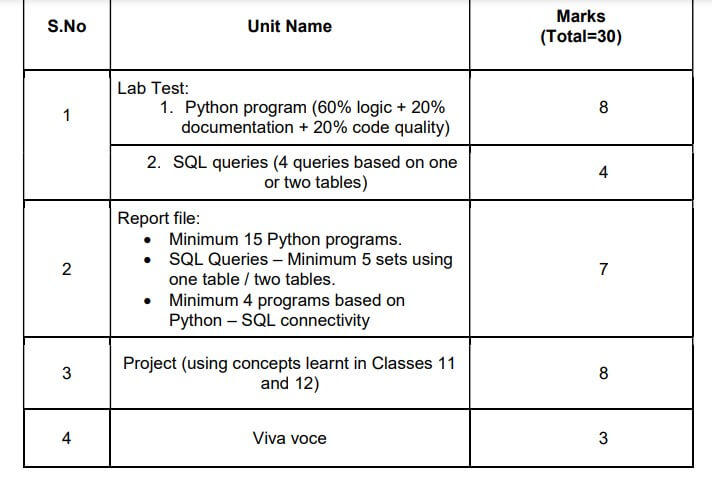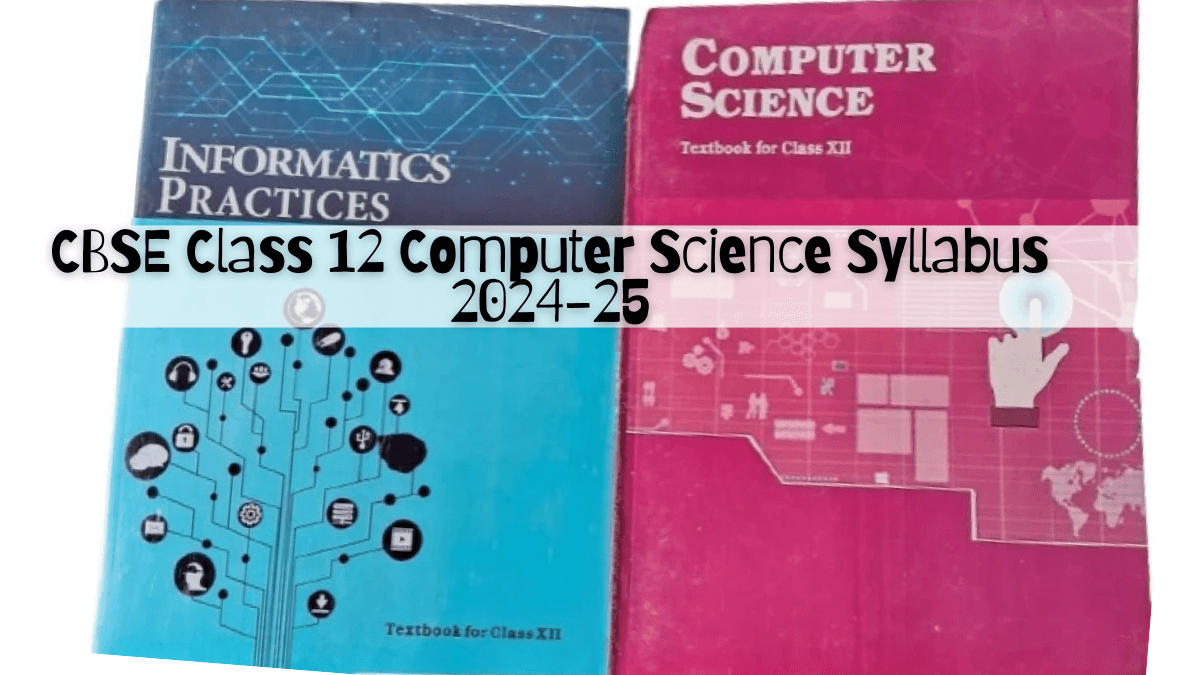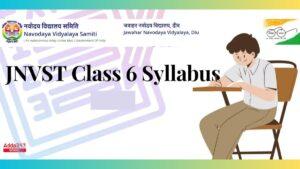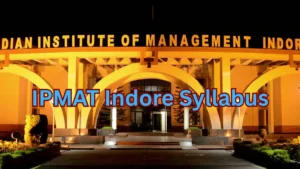CBSE Class 12 Computer Science Syllabus 2024-25 is designed to teach students about function, file handling, basic data structures, and computer networks, among others. Computer science is a cutting-edge course that will help students develop their technological skills, which are very demanding nowadays. They can download the Computer Class 12 Syllabus 2025 from the CBSE Curriculum Academic Elective (Group A) section on the official website. Check the CBSE Class 12 CS syllabus course structure, course content, projects, and practicals that need to be performed in this article.
CBSE Class 12 Computer Science Syllabus 2024-25
CBSE Class 12 Computer Syllabus 2024-25 guides the students through the basics of coding and other programming of computers and software. CBSE offers multiple elective subjects to choose from Computer Science is one of them. Students have a chance to adopt the subjects as per their understanding, interest, and future planning. This Computer Application Syllabus 2025 of Class 12 aims the following –
- Students should understand and apply the idea of function.
- They must explain and apply the notion of file handling.
- Utilize basic data structures, such as stacks.
- The syllabus provides an overview of computer networks.
- It employs database ideas, SQL, and communication between Python and SQ.
CBSE Class 12 Computer Science Paper Pattern 2024-25
The CBSE Class 12 Computer science paper pattern, marling scheme, and teaching periods are given in this section. Computer Science is one of the most popular academic electives among school students.
| CBSE Class 12 Computer Paper 2025 Marking Scheme | ||||
|
Unit
|
Unit Name
|
Marks
|
Periods | |
| Theory | Practical | |||
| 1 |
Computational Thinking and Programming – 2
|
40 | 70 | 50 |
| 2 |
Computer Networks
|
10 | 15 | — |
| 3 |
Database Management
|
20 | 25 | 20 |
| Total | 70 | 110 | 70 | |
Class 12 Computer Syllabus 2025 Unit Wise
Check the CBSE Class 12 Computer syllabus 2025 unit-wise in detail below:
Unit 1: Computational Thinking and Programming – 2
● Revision of Python topics covered in Class XI.
● Functions: types of function (built-in functions, functions defined in module, user-defined functions), creating user-defined function, arguments and parameters, default parameters, positional parameters, function returning value(s), flow of execution, scope of a variable (global scope, local scope)
● Exception Handling: Introduction, handling exceptions using try-except-finally blocks
● Introduction to files, types of files (Text file, Binary file, CSV file), relative and absolute paths
● Text file: opening a text file, text file open modes (r, r+, w, w+, a, a+), closing a text file, opening a file using with clause, writing/appending data to a text file usingwrite() and writelines(), reading from a text file using read(), readline() and readlines(), seek and tell methods, manipulation of data in a text file
● Binary file: basic operations on a binary file: open using file open modes (rb, rb+, wb, wb+, ab, ab+), close a binary file, import pickle module, dump() and load() method, read, write/create, search, append and update operations in a binary file
● CSV file: import csv module, open / close csv file, write into a csv file using writer(),writerow(),writerows() and read from a csv file using reader()
● Data Structure: Stack, operations on stack (push & pop), implementation of stack using list.
Unit 2: Computer Networks
● Evolution of networking: introduction to computer networks, evolution of networking (ARPANET, NSFNET, INTERNET)
● Data communication terminologies: concept of communication, components of data communication (sender,receiver, message, communication media, protocols), measuring capacity of communication media (bandwidth, data transfer rate), IP address, switching techniques (Circuit switching, Packet switching)
● Transmission media: Wired communication media (Twisted pair cable, Co-axial cable, Fiber-optic cable), Wireless media (Radio waves, Micro waves, Infrared waves)
● Network devices (Modem, Ethernet card, RJ45, Repeater, Hub, Switch, Router,Gateway, WIFI card)
● Network topologies and Network types: types of networks (PAN, LAN, MAN, WAN), networking topologies (Bus, Star, Tree)
● Network protocol: HTTP, FTP, PPP, SMTP, TCP/IP, POP3, HTTPS, TELNET, VoIP
● Introduction to web services: WWW, Hyper Text Markup Language (HTML), Extensible Markup Language (XML), domain names, URL, website, web browser, web servers, web hosting
Unit 3: Database Management
● Database concepts: introduction to database concepts and its need
● Relational data model: relation, attribute, tuple, domain, degree, cardinality, keys (candidate key, primary key, alternate key, foreign key)
● Structured Query Language: introduction, Data Definition Language and Data Manipulation Language, data type (char(n), varchar(n), int, float, date), constraints (not null, unique, primary key), create database, use database, show databases, drop database, show tables, create table, describe table, alter table (add and remove an attribute, add and remove primary key), drop table, insert, delete, select, operators (mathematical, relational and logical), aliasing, distinct clause, where
clause, in, between, order by, meaning of null, is null, is not null, like, update command, delete command, aggregate functions (max, min, avg, sum, count), group by, having clause, joins: cartesian product on two tables, equi-join and natural join
● Interface of python with an SQL database: connecting SQL with Python, performing insert, update, delete queries using cursor, display data by using connect(), cursor(), execute(), commit(), fetchone(), fetchall(), rowcount, creating database connectivity applications, use of %s format specifier or format() to perform queries
Class 12 CS Syllabus 2024-25 PDF Download
CBSE has released the Class 12 CS syllabus 2024-25 PDF for board exams. This syllabus can be downloaded from the official website of CBSE, cbseacademic.nic.in. The same syllabus can also be downloaded here in PDF format from the below link.
| Download Link |
| CBSE Class 12 Computer Science Syllabus 2025 PDF |
Class 12 Computer Practical Syllabus 2024-25
All the Class 12 Computer practical names and their marks are discussed in this section.

Suggested Practical List for Class 12 Computer Application
Python Programming
● Read a text file line by line and display each word separated by a #.
● Read a text file and display the number of vowels/consonants/uppercase/lowercase characters in the file.
● Remove all the lines that contain the character ‘a’ in a file and write it to another file.
● Create a binary file with name and roll number. Search for a given roll number and display the name, if not found display appropriate message.
● Create a binary file with roll number, name and marks. Input a roll number and update the marks.
● Write a random number generator that generates random numbers between 1 and 6 (simulates a dice).
● Write a Python program to implement a stack using list.
● Create a CSV file by entering user-id and password, read and search the password for given userid.
Database Management
● Create a student table and insert data. Implement the following SQL commands on the student table:
o ALTER table to add new attributes / modify data type / drop attribute
o UPDATE table to modify data
o ORDER By to display data in ascending / descending order
o DELETE to remove tuple(s)
o GROUP BY and find the min, max, sum, count and average
● Similar exercise may be framed for other cases.
● Integrate SQL with Python by importing suitable module.
Best Class 12 Computer Books 2024-25
Students get the best Class 12 computer application books and study materialsals for your 2024-25 board exam.
- NCERT Textbook for COMPUTER SCIENCE (Class XII)
- Support Materials on the CBSE website.
CBSE Class 12 Computer Science Projects 2024-25
Objective
The aim of the class project is to create something that is tangible and useful using Python file handling/ Python-SQL connectivity. This should be done in groups of two to three students and should be started by students at least 6 months before the submission deadline. The aim here is to find a real-world problem that is worthwhile to solve.
Project Ideas
- Students are encouraged to visit local businesses and ask them about the problems that they are facing. For example, if a business is finding it hard to create invoices for filing GST claims, then students can do a project that takes the raw data (list of transactions), groups the transactions by category, accounts for the GST tax rates, and creates
invoices in the appropriate format. Students can be extremely creative here. - They can use a wide variety of Python libraries to create user-friendly applications such as games, software for their school, software for their disabled fellow students, and mobile applications, of course to do some of these projects, some additional learning is required; this should be encouraged. Students should know how to teach themselves.
Instructions
The students should be sensitized to avoid plagiarism and violations of copyright issues while working on projects. Teachers should take the necessary measures for this.
| RELATED POST | |
| CBSE Class 12 English Syllabus 2024-25 | CBSE Class 12 Physics Syllabus 2024-25 |









 CUET BEd Syllabus 2026, Check Subject Wi...
CUET BEd Syllabus 2026, Check Subject Wi...
 Navodaya Syllabus for 6th Class PDF Down...
Navodaya Syllabus for 6th Class PDF Down...
 IPMAT Indore Syllabus 2026: Section-wise...
IPMAT Indore Syllabus 2026: Section-wise...









